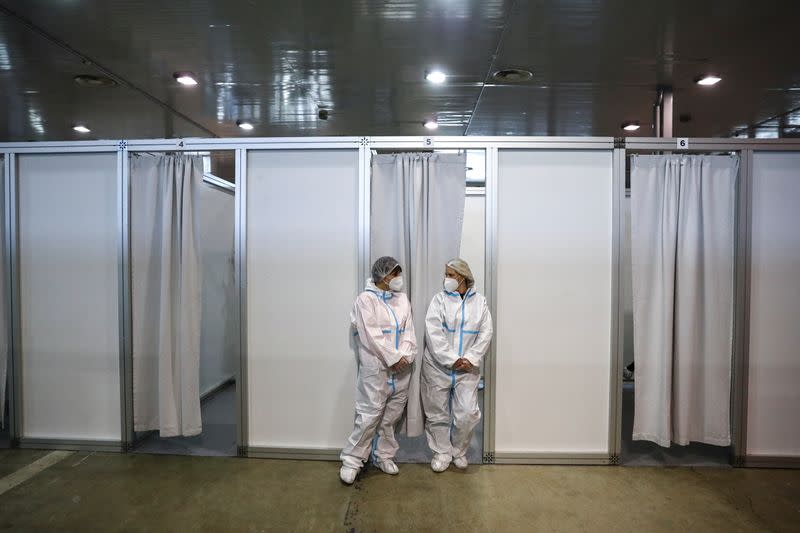BELGRADE (Reuters) – Hundreds of Serbian military personnel lined up on Tuesday in their camouflage uniforms at an exhibition hall in Belgrade, where nurses injected a Chinese vaccine against COVID-19.
Last week, Serbia received one million doses of the Chinese Sinopharm COVID-19 vaccine, making it the first European country to initiate a mass inoculation program with it.
Serbia is vaccinating essential workers, such as police, teachers and soldiers, after last month it started treating elderly people in nursing homes and medical workers with its vaccine supplies developed by Pfizer and BioNTech, and the Russian vaccine Sputnik V.
Belgrade maintains close ties with Beijing and Chinese companies have invested billions of euros in Serbia, mainly in infrastructure and energy projects.
Defense Minister Nebojsa Stefanovic said more than 700 military personnel, including himself, had been vaccinated with the Chinese vaccine.
“I was inoculated with the Chinese vaccine, which we completely trust … He said I will receive the same vaccine as our troops,” Stefanovic told reporters.
More than 20,000 Serbs have been vaccinated so far since mass inoculation began in late December.
Over the weekend, President Aleksandar Vucic said that Serbia expects to receive another 250,000 doses of the Sputnik vaccine and 20,000 doses of the Pfizer vaccine in the coming days.
In the Western Balkans region, inoculation started only in Serbia and Albania, while Bosnia, Kosovo, Montenegro and North Macedonia have not yet received supplies of any vaccine.
China approved the injection developed by Sinopharm’s BIBP in late December, its first COVID-19 vaccine for general public use. No detailed efficacy data has been released, but the BIBP said the vaccine is 79.34% effective based on provisional data.
In Serbia, which has a population of around 7 million, 3,771 people died of COVID-19 and 347,111 fell ill.
(Reporting by Aleksandar Vasovic; Editing by Alexandra Hudson)
